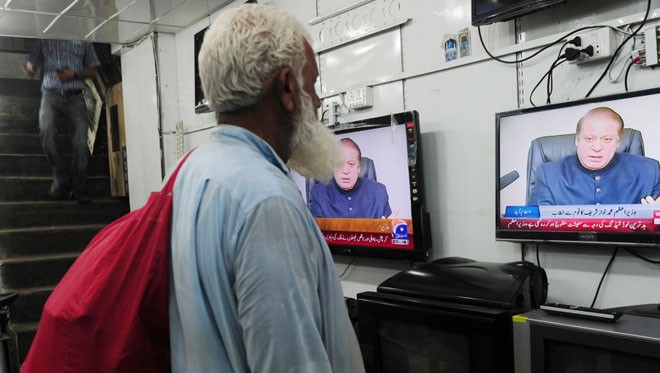

Pakistan Electronic Media Regulatory Authority (Pemra) emerged in 2002 at a time when the world was moving from vertical regulation of ‘media and telecom sectors’ to horizontal regulation of ‘broadcast and communications.’ In 2000 Johannesburg established the Independent Communications Authority of South Africa (ICASA) to simultaneously "regulate communications, broadcast and postal services sector."
In 2003, the UK merged its five media and telecom authorities into one Office of Communication (Ofcom) to regulate "TV and radio sectors, fixed line telecoms, mobiles, postal services, plus the airwaves over which wireless devices operate." The Australian Communications and Media Authority (ACMA) emerged in 2005 "to oversee the convergence of the four worlds of telecommunications, broadcasting, radio communications and the internet" by merging Australian Broadcasting Authority and Australian Communications Authority. The emergence of these communications regulators was mainly due to increasing convergence of communications technology.
Ironically, in the age of increasing convergence of technology and trends of horizontal regulations, Pakistan decided to establish Pemra to vertically regulate only electronic media in the country and that, too, only the private broadcasters. Also, just when free market was consolidating in Pakistan, when independent, autonomous and representative regulatory mechanisms were required, Pemra was put heavily under the control of the federal government.
The Pemra Ordinance empowers Islamabad to issue binding directives to it, appoint its chairman and 12 members including five private members through the president, determine their remunerations, perks and privileges and exercise executive oversight on its budget. None of these inherent structural flaws plague the above mentioned regulatory authorities unlike Pemra.
Despite these flaws, Pemra has managed to issue licenses to around 90 satellite TV channels, over 180 FM radio stations, more than 3,300 cable TV distributors, five multichannel multipoint distribution services (MMDS) and two Internet protocol TV (IPTV) channel. Says the Report of the Media Commission -- appointed by the Supreme Court in 2013 -- Pemrahas facilitated the "transformation of the electronic media landscape during 2002-2013." However, the report also emphasises that Pemra was unable "to enforce discipline" among its licensees and exercise its due authority over its subjects.
There are various reasons behind Pemra’s inability to enforce its regulatory powers. The pressure of executive interference, limited autonomy and tainted credibility due to controversial decisions are among the key ones. This plumbed new depths when Pemra found itself sandwiched between pressures from the security agencies and the political government on the issue of Geo TV. Pemra’s incompetence is also evident from the dozens of cases pending in the higher courts against its various decisions.
Pemra has simply been overtaken by developments in the limited broadcast sector it regulates. The regulations it exercises are outdated and actually predate the sector it regulates and required an overhaul through expert reforms. While cross media ownership is allowed in Pakistan, the existing regulations are inadequate in regulating cartelisation and monopolistic practices in the market. Absence of these has made a few big media groups control over 90 per cent of the market, leaving little margin for fairplay for the rest of the players.
Other countries that have allowed cross media ownership have instituted sophisticated regulatory mechanisms to ensure level playing field for small and large media groups. Under these regulations, ‘significant market players’ (SMPs) are required to share a certain percentage of their revenue with smaller groups to ensure diversity and pluralism in media market. No such concept exists in Pakistan. The current backlash at Geo TV by its rivals is a result of this anomaly.
Convergence of technology in communication sector is another key reason the already beleaguered Pemra finds itself floundering. 3G/4G cellphone services enable individuals ‘to access and upload audio/video content’ through cellphones.
Similarly, IPTV (Internet Protocol TV) and triple-play (telephone, Internet and cable TV) fall simultaneously under the purviews of both Pemra and Pakistan Telecom Authority (PTA). Two masters, one servant is a bad idea. Pemra does not have jurisdiction to regulate cellphone services while PTA cannot regulate content flowing through cellphones. Communication technology is converging at a fast speed and has blurred the lines between media and telecom sectors. Both Pemra and PTA cannot regulate the converged communication sector with their existing separate regulatory frameworks.
Pemra has also failed to move with rest of the world in modernising the broadcast sector. While Europe transformed its entire media from analogue to digital in 2007, Pemra has yet to decide about licensing for Direct-to-Home (DTH) or digital media. Absence of alternative options to access TV channels and monopoly of cable operators over their distribution has left viewers with no choice but to watch what cable operators decide to dish out. Failure of Pemra to introduce DTH or digitalisation actually compromised the very purpose of its own establishment - "to enlarge the choices available to the people of Pakistan including news, current affairs," etc.
Powerful market players, such as cable operators and SMPs are major challenges for Pemra. It struggles in effective exercise of its jurisdiction over its subjects making it effectively irrelevant due to its non-representative nature. Had it a multi-stakeholder representative board, it would have been able to keep in step with the times.
All this makes Pemra a ‘full fit for reforms’ case to make it relevant and equipped for regulatory challenges of the next 25 years. Through research and broad based consultative process, there is a need to introduce a singular representative, autonomous communications commission merging Pemra and PTA with new rules to effectively regulate the sector.